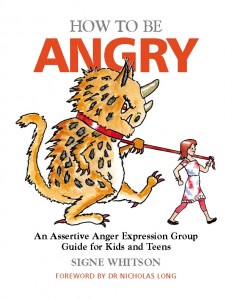Posts tagged assertiveness skills for kids
How to Help Your Overly-Compliant Child
0![]() Got a kid who can’t—or won’t—assert herself around others? Highlights Magazine interviewed me, Dr. Michele Borba, and Dr. Kristin Buss for strategies on how to help passive young people find their voices. Check out our responses using the link below and at the “Smart Answer to Parents’ Toughest Questions” section on Highlights.com
Got a kid who can’t—or won’t—assert herself around others? Highlights Magazine interviewed me, Dr. Michele Borba, and Dr. Kristin Buss for strategies on how to help passive young people find their voices. Check out our responses using the link below and at the “Smart Answer to Parents’ Toughest Questions” section on Highlights.com
https://www.highlights.com/parents/articles/smart-answers-parents-toughest-questions-passive-child-2
 For more information on helping your child move beyond passivity, aggression, or passive aggression and on to more assertive communication, check out the activities, games and discussion ideas in How to Be Angry: An Assertive Anger Expression Group Guide for Kids & Teens.
For more information on helping your child move beyond passivity, aggression, or passive aggression and on to more assertive communication, check out the activities, games and discussion ideas in How to Be Angry: An Assertive Anger Expression Group Guide for Kids & Teens.
Conflict Metaphor for Kids
43Through the wonders of Facebook, a friend of a friend of a 4th grader shared this pearl of wisdom about conflict resolution. Only wish I had the pleasure of knowing this elementary school student personally!
In conflict with another person, if you come in fierce like a tiger, you’ll have to win. So only you will be happy.
If you come in like a bunny, scared, the other person will win, so only that person will be happy.
If you come in like a bird, with your wings and your heart open, both people in the conflict will win, and both will be free.
Will be sure to use this during How to Be Angry workshops with kids!
Referee Much? Why Sibling Rivalry Is Good for Kids
459Some days, arguing comes as naturally to my kids as breathing! I take heart, knowing that there are lessons to be learned. Please read on and share this link if you, too, spend a lot of your parenthood hoping that all of this bickering will actually benefit your little ones down the line…
http://www.huffingtonpost.com/signe-whitson/sibling-rivalry_b_1353771.html
3 Ways to Help Your Child Cope with Angry Feelings
1079Have you ever been in a situation where you were so overwhelmed with feelings of anger that you were at a loss for words? You had the presence of mind to know all of the things that you shouldn’t say, but weren’t quite sure how to express your true feelings without damaging your relationship. Adults often struggle with effectively communicating angry feelings. For children, this challenge is doubly difficult; kids don’t want to get in trouble for expressing themselves aggressively, but they often lack the skills for communicating assertively.
For three specific skills parents can teach kids to cope with angry feelings effectively, please check me out on Yahoo! Shine:
http://shine.yahoo.com/
Or check out How to Be Angry: An Assertive Anger Expression Group Guide for Kids & Teens for even more kid-friendly strategies.
